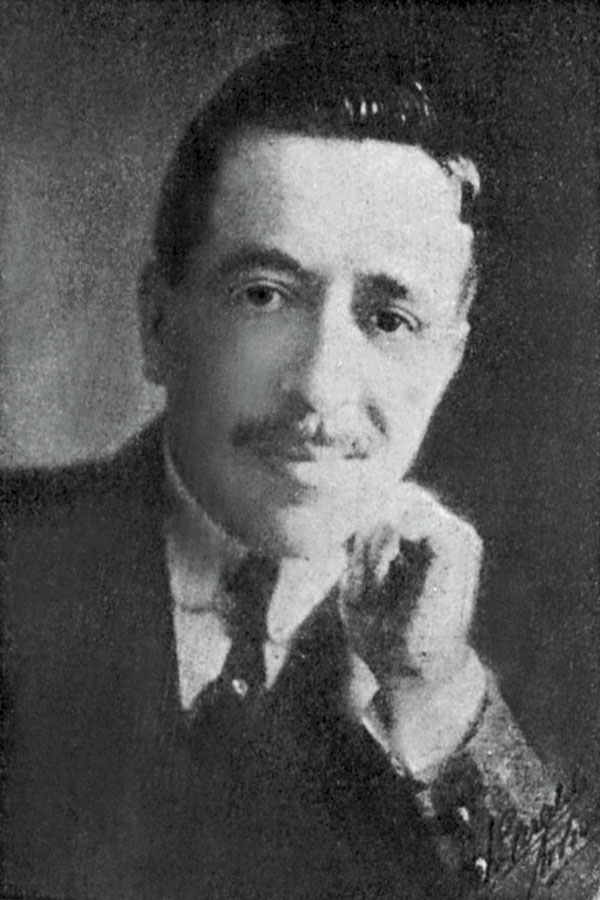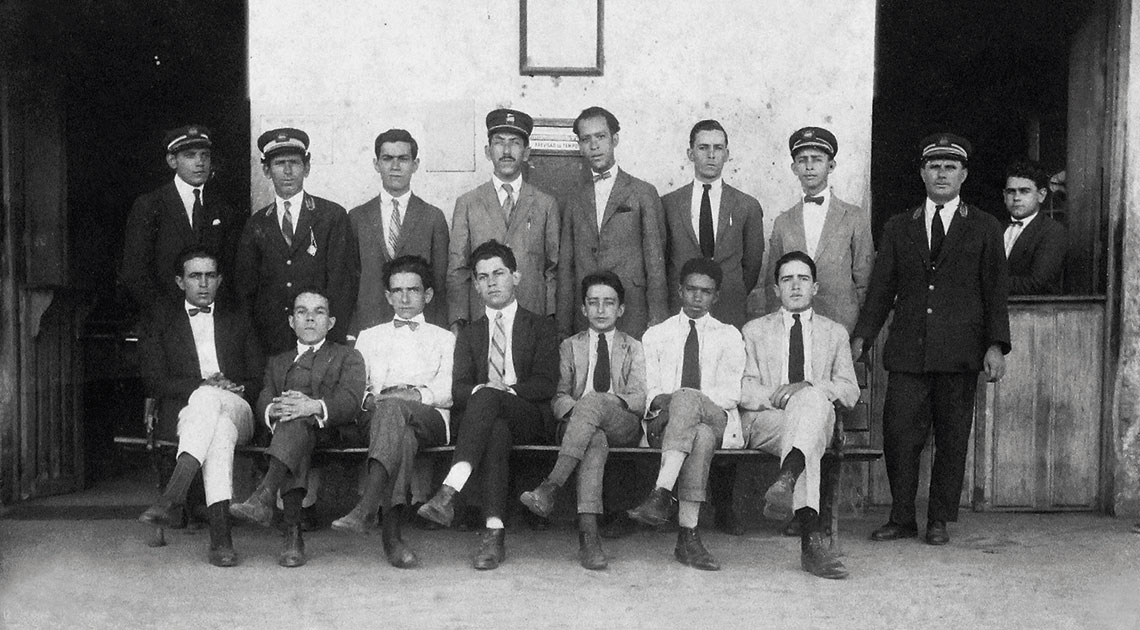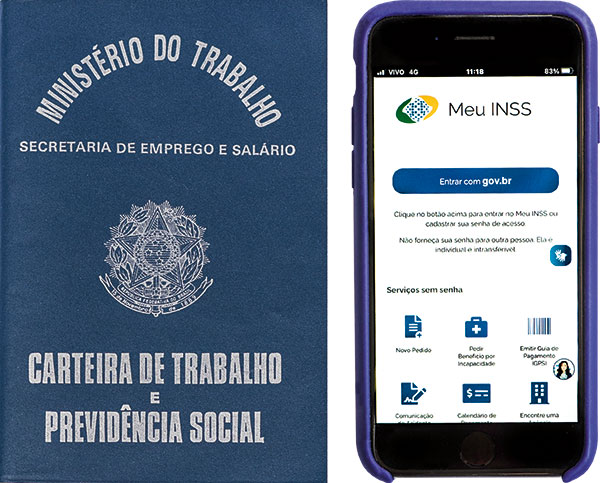In 1932, Antonio Vieira, an employee of Companhia Paulista de Estradas de Ferro (The São Paulo State Rail Company), decided to retire and asked his employer to calculate his time in service. For years, he had been working on the construction of the railways operated by the concessionaire before being hired as a foreman responsible for one of the teams that cleaned and maintained the tracks. He earned almost as much as the engineers who drove the trains, and according to his calculations, he had completed 30 years of work for the company — more than enough to retire and put his feet up.
The engineer who analyzed his case, however, claimed that the state rail company had nothing to do with the years that Vieira worked in construction, because he had actually been working for the contractors in charge of the project. Vieira argued that he had worked for the state company the entire time, even though he had no formal contract. But the company would not budge. “We cannot include the years that this foreman worked on behalf of contractors,” the analyst noted in the employee’s file.
Found in the rail company’s archives by historian Ana Lucia Duarte Lanna of the School of Architecture and Urbanism at the University of São Paulo (FAU-USP), Antonio Vieira’s record offers a glimpse into the past and helps us understand the present. The document demonstrates some of the difficulties faced by workers in the early days of the Brazilian social security system, which are reflected in the barriers preventing many from receiving the benefits they deserve to this day.
The law that created pension funds for railway workers marks the foundation of social security in Brazil. Approved by the country’s National Congress in December 1922, the law was passed by President Artur Bernardes (1875–1955) 100 years ago, in January 1923. Military personnel, teachers, and other public servants were granted the right to government pensions by the Portuguese Empire, but railway workers were the first group given access to a social protection system organized in modern terms, with well-defined rights and obligations.

Wikimedia CommonsEloy ChavesWikimedia Commons
Every company in the sector had to set up an exclusive pension fund and an aid fund for employees and their families. Each fund was fed by compulsory contributions from employees, who paid 3% of their salaries; companies, which paid in 1% of their revenue; and customers, who paid an additional 1.5% on top of the fares charged by the railway companies.
To retire with full benefits, which could reach 90% of final salary for the lowest paid employees, railway workers needed to complete 30 years of service and be at least 50 years old. Anyone who completed 30 years of service before the age of 50 could retire with a lower pension, as could people aged over 60 if they had at least 25 years of service. Other benefits paid by the funds included medical assistance, compensation for accidents, and payment of pensions to heirs if a worker died.
In a country that had recently abolished slavery, where labor relations were strained and the only protection offered by law was accident insurance, these benefits represented a significant step forward. But they only applied to railway workers, and the majority of people remained as helpless as before. “Since the very beginning, our system has struggled with the challenges of incorporating large sections of the population,” says economist Andrej Slivnik, who wrote a dissertation on the origins of social security in Brazil as part of his master’s degree in history and is now researching the topic in greater depth for his PhD at the University of Campinas (UNICAMP).
The funds were created for railway workers as a result of a bill proposed by federal deputy Eloy Chaves (1875–1964) of Partido Republicano Paulista. Coffee exports were the driving force of the Brazilian economy and farmers depended on trains to transport the goods. Railroad operators were constantly concerned about union unrest among railroad workers, who were very well organized and shut down the train lines several times in the early twentieth century. Companies saw pension funds as a means of containing dissatisfaction among their employees and brought up the idea with the deputy in mid-1921.
Chaves had identified social peace as his main objective. “To the harsh class struggle characterized and advised by extremes or maddened by strange and complicated passions, I propose an intimate and peaceful collaboration of all, trusting in its ultimate success for the benefit of our country,” he said when presenting the bill to Brazil’s House of Representatives.

Bauru Regional Railroad Museum CollectionEmployees of Companhia Paulista de Estrada de Ferro, at Bauru stationBauru Regional Railroad Museum Collection
The debate surrounding the bill dragged on for more than a year, with the minimum age required to receive a full pension reduced from 55 to 50 during the process. The law authorized companies to temporarily pay out less than expected if the funds did not hold enough value to cover the pensions. Each fund was to be managed by a council, chaired by a company director and including two other employees chosen by the company and two elected by the railway workers.
The legislation did not establish any right for the government to intervene in the management of the funds, but this soon changed due to companies seeking loopholes to avoid paying out, as was the case with Antonio Vieira. Three months after the law was approved, Artur Bernardes formed the National Labor Council and tasked it with overseeing the railway workers’ funds. Its duties included producing annual reports and analyzing appeals filed by beneficiaries against decisions made by fund administrators.
The first worker who retired under the new rules was Bernardo Gonçalves. The 58-year-old was head of a station run by the São Paulo Railway Company, which built the state’s first railway in the nineteenth century, and had almost 37 years of service when he decided to retire. “I am led to make such a request in the early days of this pension fund due to the precarious state of my health,” he stated in his application, presented in June 1923 and approved almost two months later.

Wikimedia CommonsEmployment record of an employee at Associação dos Socorros Mutuos Ribeiro de Barros in 1932Wikimedia Commons
The system was expanded in the following years, with pension funds created for employees of ports, shipping companies, and other sectors with organized workers, as well as the creation of the Pension Institute for Federal Public Employees. It was a capital-based system similar to current private pension funds, with workers making contributions throughout their working lives to support their retirement, but there were always doubts about the financial stability of the funds.
“The decentralized arrangement, with small, dispersed institutions run by companies, was not the most appropriate in terms of sharing risk,” says Luis Eduardo Afonso, an economist from USP’s School of Economics, Administration, Accounting, and Actuarial Science who studied the topic for his PhD thesis. “Our financial market was incipient and had no instruments to support the funds in the long term.”
In 1945, the vast majority of the population remained unprotected. According to the 1940 Demographic Census, 83% of the workforce was made up of domestic and rural workers who would have to wait another three decades before they would be entitled to social security benefits.
The biggest funds were backed by multiple sectors, such as bankers, traders, and industry. Their financial balance was soon threatened. The government failed to honor its commitments to the funds, accumulating debt, and the funds invested some of their participants’ reserves in projects with no guaranteed return, from hospitals and housing complexes to the construction of Brasília.
As expenses grew rapidly, the signs that many funds were running low became evident in the 1960s. According to calculations by economist Juliana Trece of the Brazilian Institute of Economics at the Getulio Vargas Foundation (IBRE-FGV), debts owed to the Industrial Pension Institute (IAPI) in the mid-1960s, mainly from the government, compromised 67% of the assets it needed to pay the benefits promised to workers.
The model had become unsustainable and needed to be reformed once again. In 1960, Brazil’s Organic Law on Social Security established the distribution system that remains in force to this day, under which pensions for retirees are funded by contributions from active workers. The rules of the funds and institutes created under the old system were standardized, paving the way for them to be incorporated into the National Pension Institute (INPS), which was itself replaced by the National Social Security Institute (INSS) in 1990.

Léo Ramos Chaves / Revista Pesquisa FAPESPOld worker’s card and INSS applicationLéo Ramos Chaves / Revista Pesquisa FAPESP
The new system was only extended to cover the majority of the workforce in the 1970s, when rural workers, the self-employed, and domestic workers earned the right to a pension. Even today, however, a large part of the population remains unprotected. Workers without a formal contract, such as ride share drivers and restaurant delivery drivers, are not entitled to INSS benefits. According to the International Labor Organization (ILO), only 61% of Brazil’s workforce currently has social security coverage. The average in the Americas, including the USA, is 65%, and the average in Europe is 84%.
People who are informally employed and have contributed little in social security payments face major difficulties obtaining the benefits offered by the system the way railroad workers did in the past. “Low earners don’t have much reason to enter the system, because they depend on government welfare programs and wouldn’t make much more if they were formally employed and making social security payments,” says Kaizô Iwakami Beltrão, a statistician from the FGV School of Public Policy and Government.
With expenses rising and insufficient contributions, successive governments have been forced to implement new reforms to correct imbalances — there have been seven since the 1988 Constitution. The INSS deficit has been reduced, but is expected to hit 2.5% of gross domestic product (GDP) this year, and economists forecast that it will rise further in the future. The first data released by the 2022 Census indicates that financing the system is becoming more of a challenge. The Brazilian population grew less than expected in the last decade, meaning that in the future, there will be fewer people working to foot the bill.
Milestones in Brazil’s social security system
1821 Dom João VI grants pensions to masters and teachers with 30 years of service
1835 Creation of the Montepio Geral state pension fund for public servants
1888 A decree issued by Princess Isabel grants pension rights to postal employees
1919 Law approved by Congress establishes mandatory insurance for workplace accidents, with compensation paid by companies
1923 The Eloy Chaves Law creates pension funds (CAPs) for the railway sector, later expanded to other sectors, such as ports and shipping
1933 Creation of pension institutes (IAPs) with nationwide coverage for specific groups of professionals
1960 CAP and IAP rules unified and maximum values set for contributions and benefits
1966 CAPs and IAPs abolished and unified under the National Pension Institute (INPS)
1988 The new Constitution recognizes social security as a fundamental social right for all Brazilians
1990 INPS replaced by the National Social Security Institute (INSS)
1993 Constitutional amendment establishes social security contributions for public servants
1998 New constitutional amendment changes retirement requirements for the public sector, replacing years of service with years of contribution
2003 Public servant pensions start being calculated based on an average contribution amount rather than end-of-career salaries
2015 Mandatory retirement age for public servants raised from 70 to 75
2019 Constitutional amendment raises the minimum retirement age for men and women and adds the new limit to public servant retirement requirements
Source
Agência Senado and Os 100 anos da Previdência Social


